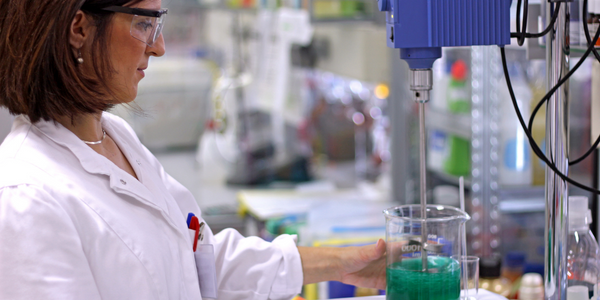Download PDF
Dow Benelux maintains a happy workplace
Technology Category
- Analytics & Modeling - Predictive Analytics
Applicable Industries
- Chemicals
Applicable Functions
- Human Resources
Use Cases
- Predictive Maintenance
- Personnel Tracking & Monitoring
Services
- Data Science Services
The Challenge
Dow Benelux, a branch of the Dow Chemical Company, recognized the importance of employee wellbeing for the productivity and efficiency of the organization. The company wanted to monitor workplace stress at individual, departmental, and organizational levels. The challenge was to develop an analytics solution that could effectively measure and monitor these stress levels. The company also needed to comply with Dutch government legislation requiring employers to quantify potential occupational health risks. Dow Benelux wanted to go beyond mere compliance and embed occupational health management into its core business processes.
About The Customer
Dow Benelux is a branch of the Dow Chemical Company, one of the world’s leading science and technology companies. The company combines chemistry, innovation, and sustainability principles to address many of the world’s most challenging problems. In 2011, it achieved sales of US$60 billion and employed approximately 52,000 people in 36 countries across the globe. Dow Benelux manages a total of 23 production units across the Benelux region, including Dow’s largest site outside the US. The company employs 2,100 people in the Netherlands and Belgium, all of whom are regularly assessed by the company’s internal health service to monitor their physical and psychological wellbeing.
The Solution
Dow Benelux partnered with IBM to develop a statistical model to measure various aspects of employee stress levels using IBM SPSS predictive analytics software. The first step was to design a reliable questionnaire that encompassed 24 different concepts grouped into four dimensions. The data from the questionnaires was gathered into a central database and analyzed using IBM SPSS software. The software created a chart for each employee showing how they scored in each dimension, compared to their previous scores and the average scores for their department and workplace. The solution enabled the team not only to measure and monitor individual stress levels, but also to look at overall responses at department and site levels.
Operational Impact
Quantitative Benefit
Related Case Studies.

Case Study
Honeywell - Tata Chemicals Improves Data Accessibility with OneWireless
Tata was facing data accessibility challenges in the cement plant control room tapping signals from remote process control areas and other distant locations, including the gas scrubber. Tata needed a wireless solution to extend its control network securely to remote locations that would also provide seamless communication with existing control applications.

Case Study
Advanced Elastomer Systems Upgrades Production
In order to maintain its share of the international market for thermoplastic elastomers AES recently expanded its Florida plant by adding a new production line. While the existing lines were operating satisfactorily using a PROVOX distributed control system with traditional analog I/O, AES wanted advanced technology on the new line for greater economy, efficiency, and reliability. AES officials were anxious to get this line into production to meet incoming orders, but two hurricanes slowed construction.
Case Study
Wireless GPS Tracking & Security Monitoring
Enhancing the security of hazardous freight and ensuring compliance with Homeland Security’s Transportation Security Administration mandate that all trains carrying chemicals capable of creating a toxic inhalation condition are equipped with on-board safety monitoring systems.

Case Study
Field Device Asset Management For Chemical Company in China
Chinese chemical subsidiary of multinational corporation serves customers throughout the world. Sales offices and research and technology centers are strategically located to provide rapid response to customer requests. Just two workers were assigned to maintain thousands of intelligent instruments in three production units, so they could do little more than react to device issues as they appeared. This costly maintenance method inevitably led to unexpected downtime when a critical instrument failed. Plant management recognized the need to change from reactive to predictive maintenance for all assets, including instruments and control valves, but help was needed in implementing such a technology-based initiative.

Case Study
Industrial Workforce Mobility for Improved Safety & Operations
Huntsman Corporation, a global manufacturer and marketer of differentiated chemicals, undertook an aggressive program to eliminate injuries, product defects, and environmental releases at their Port Neches facility. Termed “Project Zero”, this program required a completely mobile solution to empower operations and maintenance personnel to capture defects, track work progress and make process and safety related decisions in real-time.






